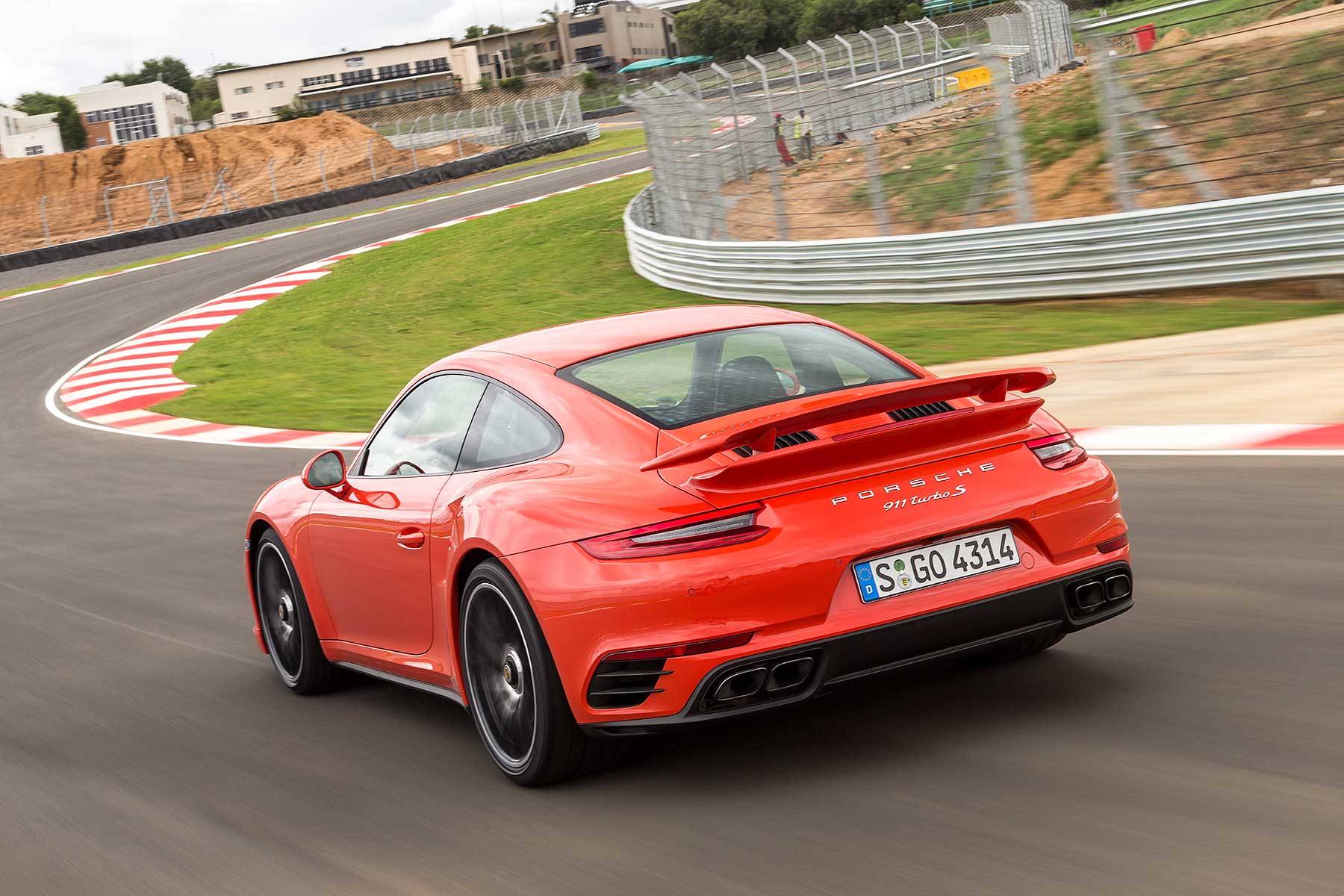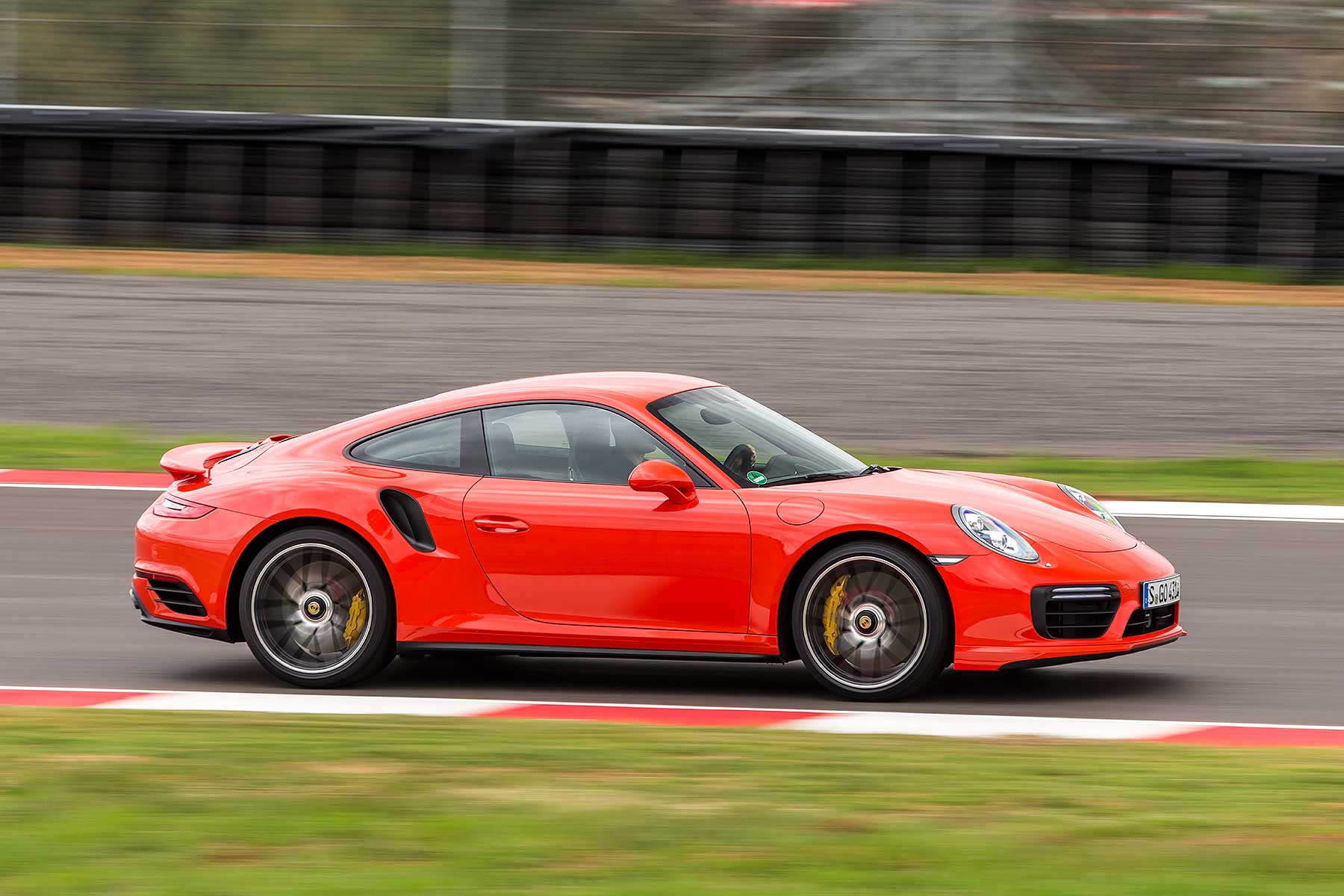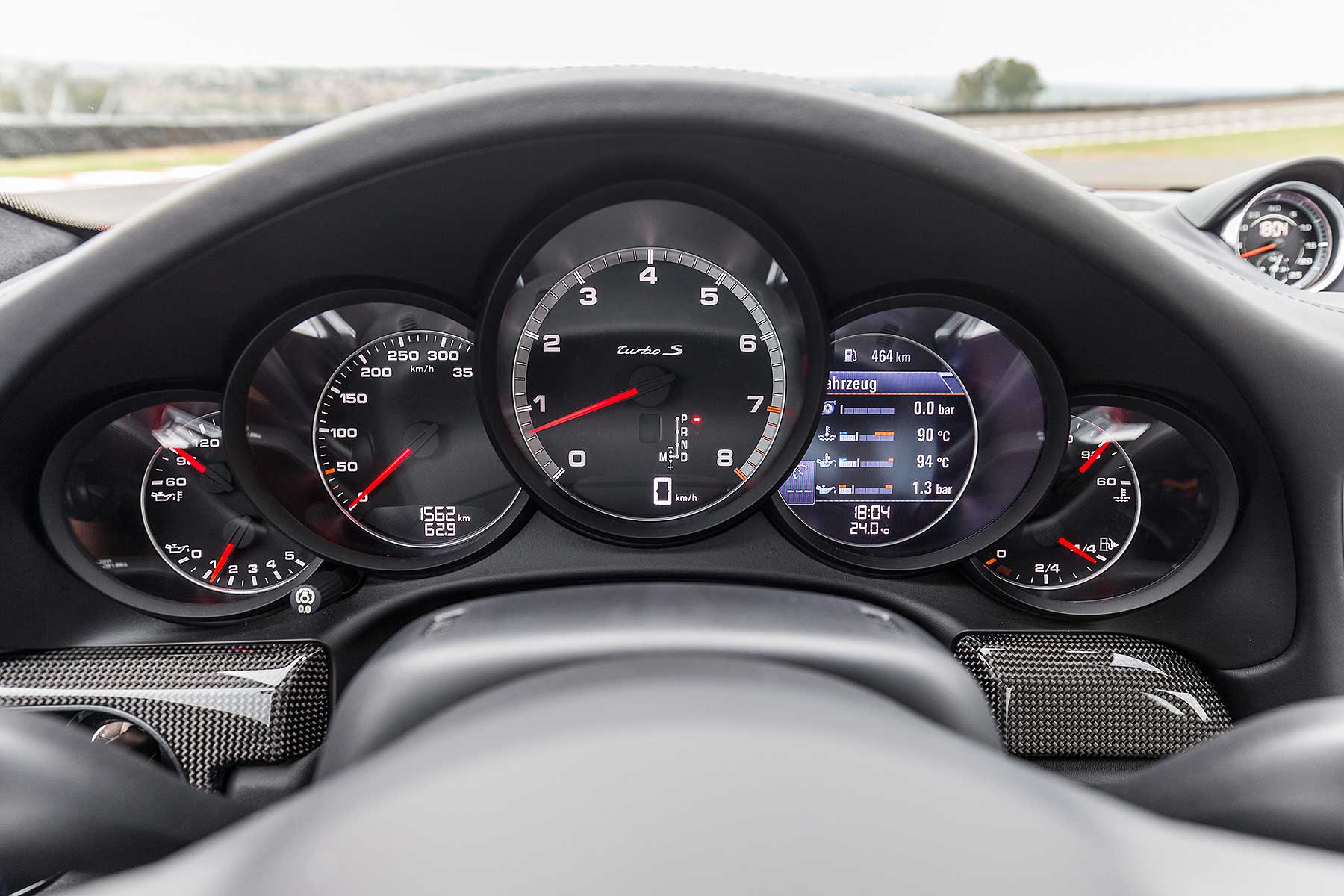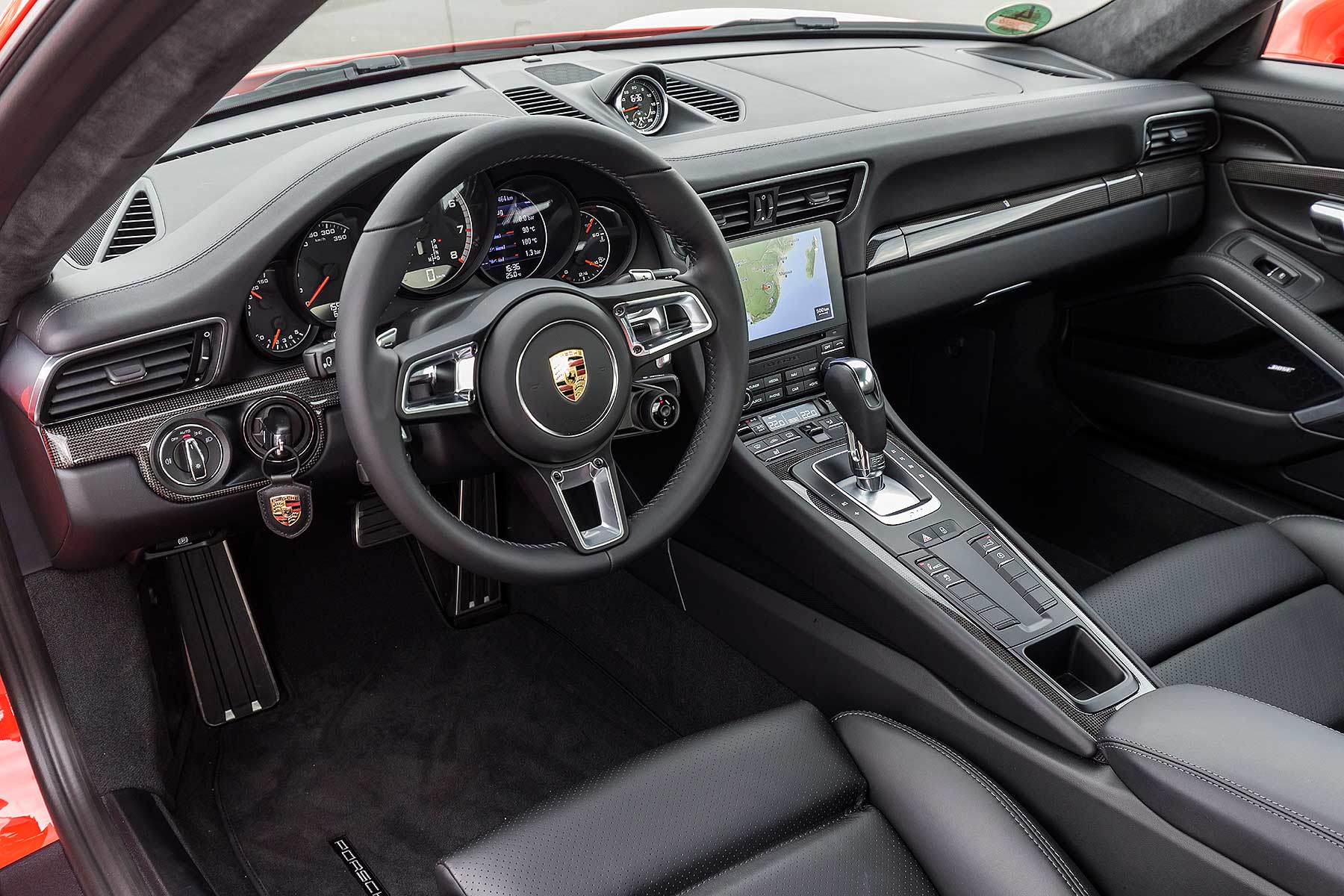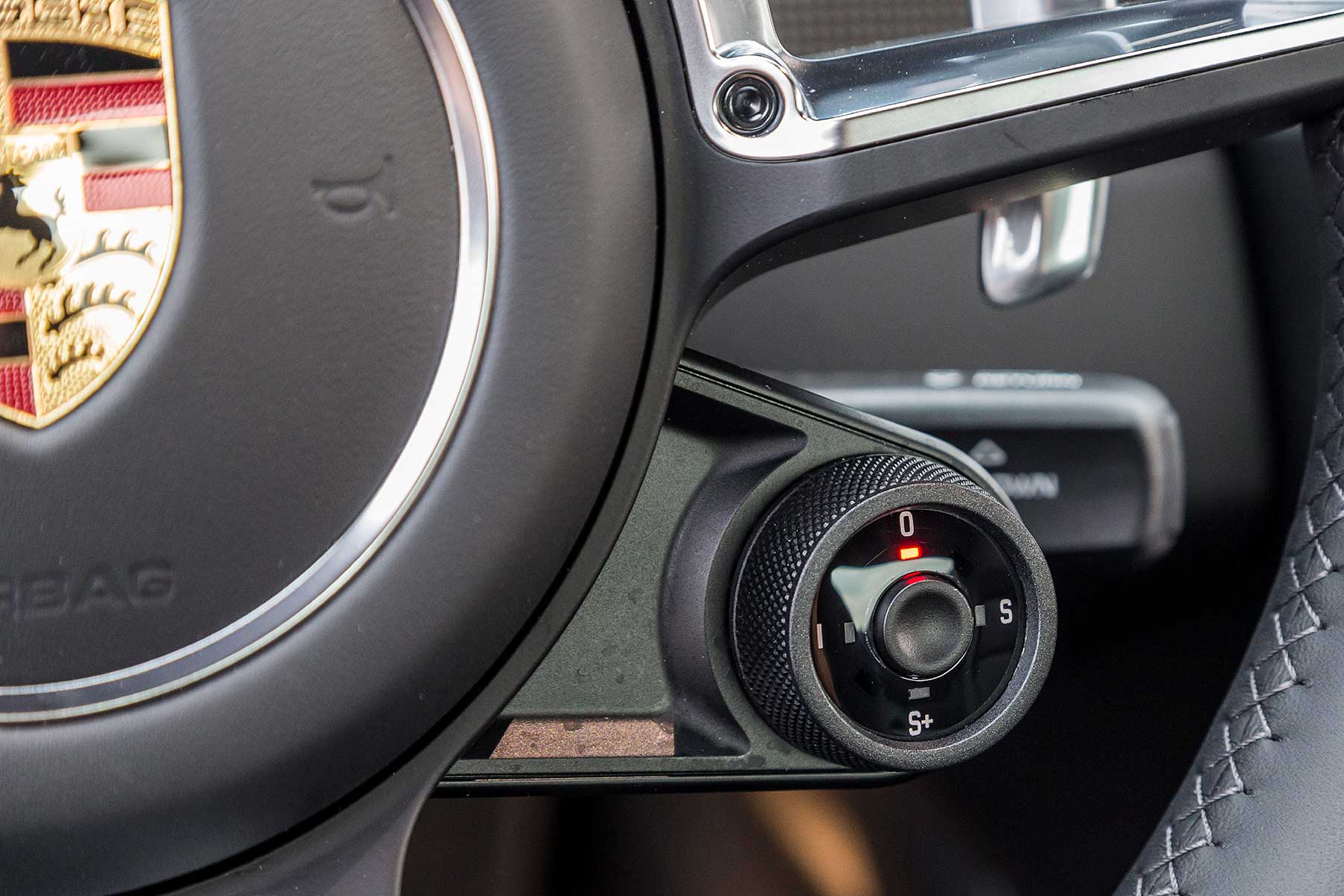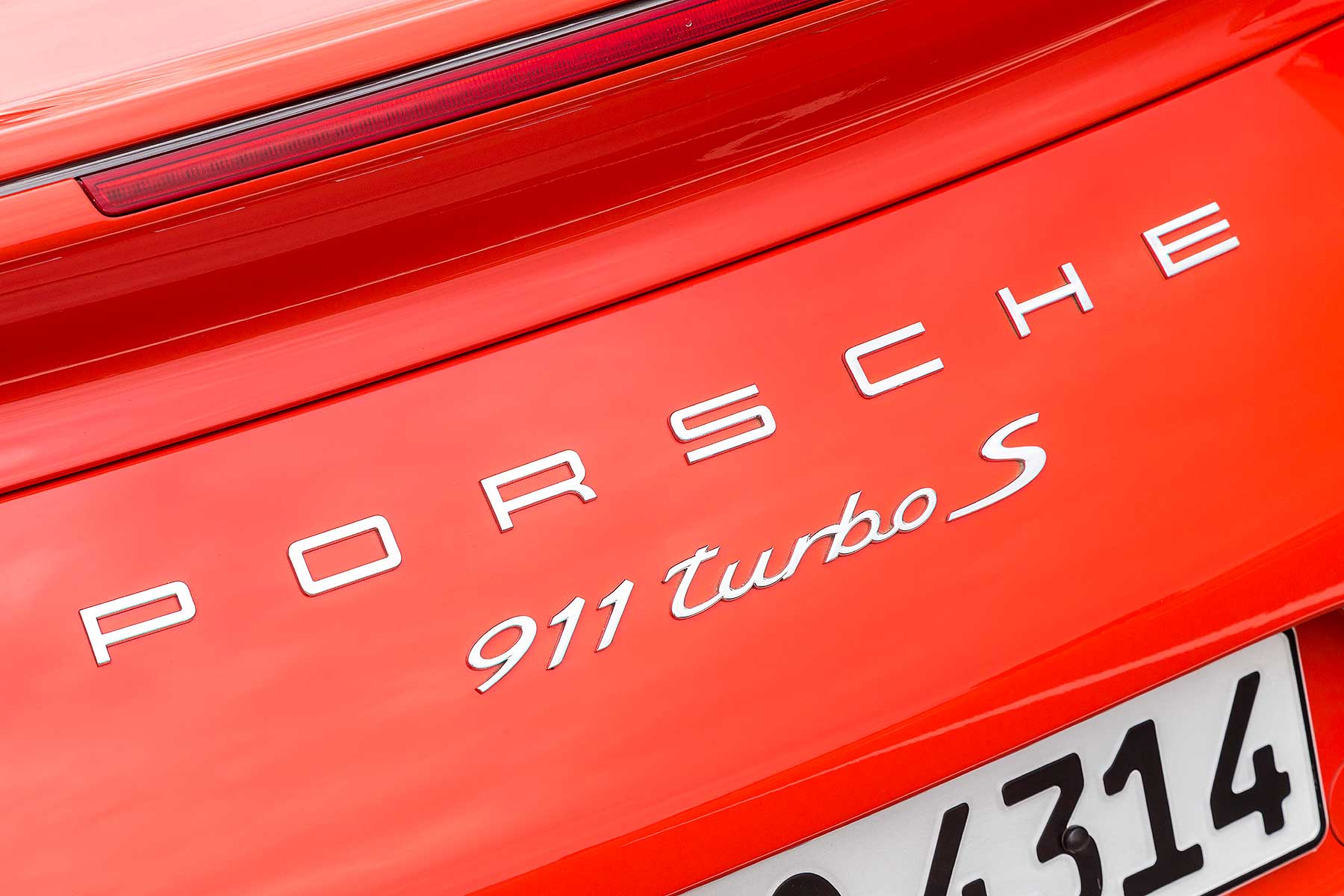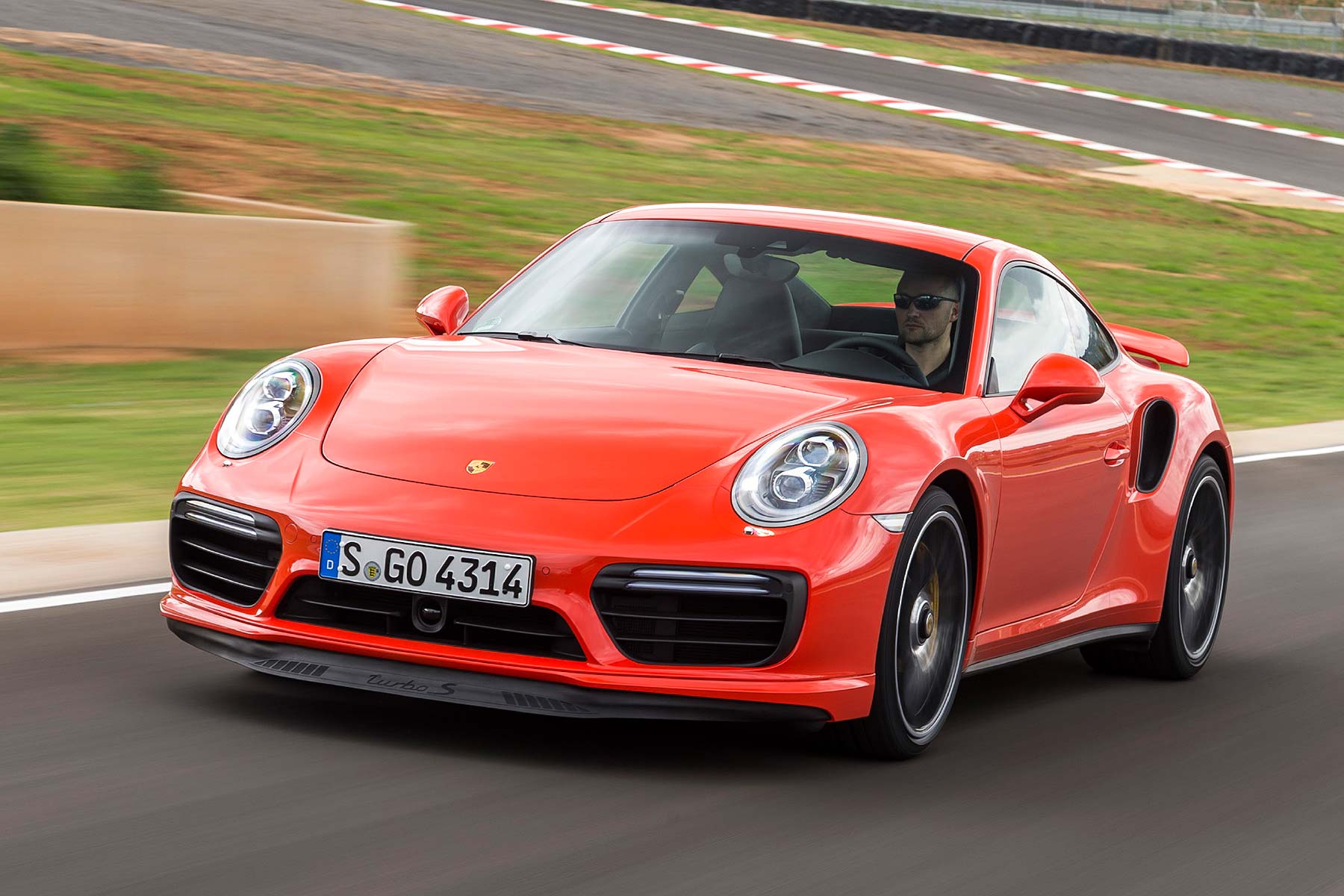 Now all the non-GT3 Porsche 911s are turbocharged, where does this leave the Turbo turbo? Has Porsche unintentionally diluted the power-oozing daddy of its range in the pursuit of more power, cleaner exhausts and modernity?
Now all the non-GT3 Porsche 911s are turbocharged, where does this leave the Turbo turbo? Has Porsche unintentionally diluted the power-oozing daddy of its range in the pursuit of more power, cleaner exhausts and modernity?
Not a bit, snorts product line boss August Achleitner as he prepares to tell us all about the 2016 Porsche 911 Turbo and Turbo S range. The deep breath before his hour-long presentation at the Kyalami race track in South Africa is not for effect.
See, there’s been a Porsche 911 Turbo for 40 years now, all the time with one goal: packing in as much power as possible into a compact 911-sized silhouette. In the early days, this was far too much power for the chassis to cope with, and the 911 Turbo duly developed a reputation as a bit of a demonic animal. Which actually did it no harm whatsoever.
These days, it has four-wheel drive, so you don’t have to worry about that. The bigger challenge is not losing the back end of the car, but losing your licence each and every time you drive it. It’s been sanitised, but the 911 Turbo is still ferocious.
For 2016, the regular £126,925 Turbo now produces 520hp, 20hp more than before. The one that most buyers go for, the Turbo S, throws out 580hp: in a 911-sized car, that delivers a 205mph top speed and a 0-62mph time of just 2.9 seconds. For £145,614. Makes even that heady price tag seem cheap.
Porsche’s even engineered a clever anti-lag system that maintains turbo boost when cornering, but without ruining fuel economy: yes, it’s greener too, averaging 31mpg (2mpg more than before) and emitting 212g/km CO2.
It all means the new 911 Turbo S is the first one to do more than 200mph, the first one to dip below 3.0 seconds 0-62mph, the first one to average over 30mpg. Looks like the daddy’s reasserted his status alright.
You’ll spot the new Turbos from their (and excuse the Porsche code-geek speak) 991-II 3D rear lights, new headlights with four-point running lights, modified front aero details, smooth new doorhandles and a fancy three-part rear lid with decidedly 70s-style louvres.
Oh, and also from the fact it may now, for the first time ever, actually be going sideways in safety, rather than in the seconds before a crash. See, Porsche’s developed a new PSM Sport mode for its stability control system that, a bit like the Ford Focus RS’s system, allows controlled tail-out fun without spitting you off the road.
The hour’s up. Achleitner’s voice has gone. It may not look like it’s much-changed, but Porsche hasn’t half been busy reasserting the Turbo’s status with this facelift. Time to find out if it’s been worth it.
On the road
It’s stupendously fast. Goes without saying: so was the old one. That 0-62mph time of 2.9 seconds is a worst case scenario and, thanks to launch control, it’s ever-repeatable. More than 1G is generated during acceleration and the intensity of it stomach-churning.
Unbelievably though, this one feels even faster. Frankly, it’s hard to tell much difference in pure acceleration: this is different degrees of ludicrous. But on the road, the 991-II Turbo S certainly does feel even more energetic and electrifying than before.
This is because engine response is improved. The anti-lag system, called dynamic boost, virtually eliminates any delay before power floods you when going back on the throttle in corners: on switchback roads, where you’re constantly on and off the accelerator, it feels significantly crisper and, as such, faster.
You can further enhance this by twisting the mode switch into Sport and Sport Plus mode. You can also ‘supercharge’ the Turbo S for 20 seconds by jabbing the Sport Response mode in the middle. It preconditions the car for 20 seconds by retarding the ignition, opening the throttle valve, closing the variable turbo vanes and reprofiling the PDK shift pattern. It’s like a caffeine hit for the car and is utterly addictive.
Incidentally, you engage the drift-ace PSM Sport mode by briefly pressing the PSM button: it’s independent of the modes above. So you perhaps can have your slide slice of cake and eat it.
You can manage the gears yourself, using steering wheel paddles or the PDK shifter that’s now the correct ‘forward-for-downshift’ way round. Frankly, we left it in Sport Plus and found little complaint: the rare moments we would like a lower gear were quickly sorted by jabbing Sport Response.
The 911 Turbo S is fitted with Porsche Carbon Ceramic Brakes as standard, the gigantic 410mm stoppers that are totally tireless and more than up for the task of shedding the car’s fiendish speed on a circuit. Sensible: you’d have to option them up even on the standard Turbo.
Ride and handling? Why, it’s a Porsche 911, so it’s extremely good. The ride’s firmer than in less incendiary variants, and the sheer brute engineering gone into making all that engine power (and the not-insubstantial 553lb ft of torque) work without ripping the drivetrain apart means it’s not as delicate or adjustable. Some will have more fun in a regular Carrera. But it’s still mighty.
Scratching beneath the surface reveals a responsive, alert, surprisingly involving all-wheel drive car. You feel enormously confident using its exaggerated power, particularly power-oversteering out of corners when on track, or feeling the front end bite rather than understeer.
In some ways, it’s as chuckable as a hot hatch and responds to being driven as such. But will then ease you back home in taut but cushioned comfort afterwards.
On the inside
Turbo S spec means a load of luxurious equipment as standard. Standout is the new PCM4 infotainment system, now featuring Apple CarPlay, online sat nav maps plus pinch and swipe functionality all hidden behind a flush-fit glass screen.
There are new trim colours inside for those with deep pockets. Saddle brown and bordeaux red leather give a retro touch; two-tone black and bordeaux red is now the standard colourscheme on the Turbo S. New options that might be useful in daily use include lane departure warning; standard is post-collision auto-braking, which hopefully you’ll never use.
The 360mm GT sport steering wheel is perfectly round and a lovely thing to hold. Better to hold than to look at: there’s too much shiny chintz on it, and the fake boltheads on the silver bits are awful.
It generally feels a very plush, luxurious car. Noise levels seem down on before, there’s a Bose sound system as standard and the high-back sport seats are excellent – far better to sit in than you expect from their relatively understated appearance.
You’d have no complaint if you wanted to use one every day. And you’d almost certainly wear the plastic to a shine on that Sport Response button.
Running costs
The 911 Turbo S will cost more to run than a regular Porsche, without question. It’s a rocketship of technology and, while this probably won’t go wrong or become a nightmare, servicing is a must and will be pricier than for other 911s.
It will also run through tyres pretty quickly if you use its power enthusiastically: that’s pure physics rather than any fault of the car. The 305/30 ZR 20 steamrollers on the back won’t come cheap.
At least the PCCB carbon ceramic brake discs should last the lifetime of the car – that’s part of their appeal (and partly how Porsche justifies the expense to those who option them).
Remember too, this is a Porsche. It’s epically fast but has been engineered to be as robust after 100,000 miles as it is out the box. Go, use that acceleration time and again in confidence….
Verdict
The Porsche 911 Turbo has always been a fantastically powerful car; the 2016 model continues that tradition, only adds in even more control and vivacity when you want to sense more than just warp speed.
The clever anti-lag solves a grumble that the turbo’s powertrain was a bit dull to use. The brilliant Sport Response button electrocutes it further if you really want a quickfire buzz. The chassis is enormously capable once you start digging in (which requires both speed and, ideally, a racetrack).
It’s still the boss of the 911 range. There was a GT3 RS sitting in the pits: ooh, we’d love to drive that, we said. No point, they said: the Turbo S is quicker. Of the modern stuff, only the 918 Spyder is (a bit) quicker, and you can’t buy that anymore. This is a FAST car.
Too fast? Most of us would get all the speed we want, and more, from a regular Carrera 4S. This would save us half the price of that car again – that’s how ferociously expensive the 911 Turbo S is. For some, there’s the rub with the Turbo: do the turbos make the Turbo turbo irrelevant?
We think not. It still has a place. It’s wildly powerful, has more of the ‘right’ sort of thrilling than ever, and has bragging rights coming out its ears. Status rediscovered, we say.
Specifications: 2016 Porsche 911 Turbo S
Price: £145,773
Engine: 3.8-litre flat-six twin-turbo petrol
Gearbox: Seven-speed PDK
Power: 580hp
Torque: 553lb ft
0-62mph: 2.9 seconds (PDK + Sport Plus)
Top speed: 205mph
Fuel economy: 31.0mpg
CO2 emissions: 212g/km (PDK)
